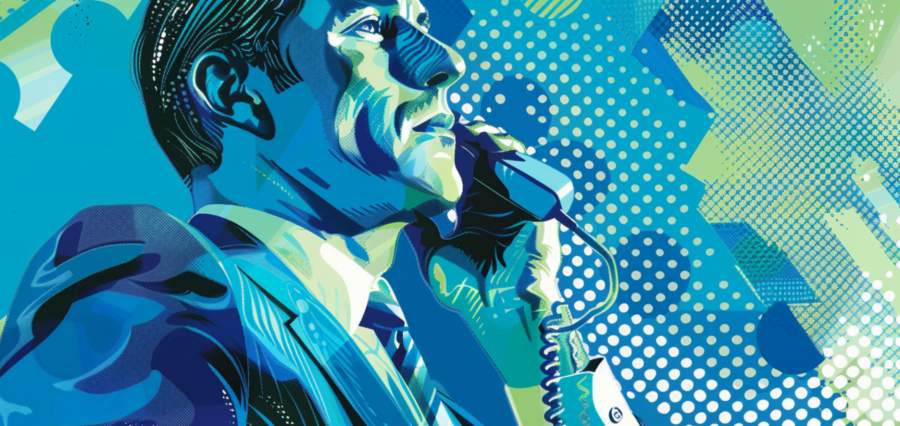Once Upon a Debt
Negotiation often feels like walking into a dimly lit room where everyone knows there’s a way out but no one can quite find the light switch. In the world of debt recovery, the air gets even thicker. But what if we could clear the fog with the power of a good yarn? Storytelling isn’t just for bedtime or Netflix binges; it’s a potent tool in the debt negotiator’s kit, transforming numerical tug-of-wars into engaging narrative experiences that might just end in a resolution that fits all.The Power of Narrative Persuasion
It’s no secret that everyone loves a good story. From the courtroom to the movie theater, stories have the power to persuade, motivate, and inspire. In debt settlement negotiations, the story you weave can turn a spreadsheet full of red into a shared journey towards black. A debtor’s financial missteps are rarely just numbers; they’re chapters in a personal saga of ambition, misfortune, and hope. By framing a debt situation within this narrative, negotiators can foster empathy rather than animosity, leading to more collaborative and fruitful discussions.Crafting the Plot
When engaging in narrative negotiation, the structure of your story can make all the difference. Begin with the setting: the shared challenge of an outstanding debt. Introduce the characters: the debtor, possibly a protagonist worn by circumstance but hopeful for redemption; and the creditor, not a villain, but a potential ally seeking a mutually beneficial resolution. The plot thickens as both parties explore past decisions and current capabilities, aiming for a climax that resolves the tension—a settled debt and restored relations.Character Development is Key
What makes a story resonate? Relatable characters. In negotiations, humanizing the debtor by highlighting their unique circumstances and genuine efforts to rectify their situation can shift the dynamic. This isn’t about sugarcoating the facts but rather presenting them in a context that acknowledges the debtor’s humanity. Such an approach can disarm adversarial attitudes and open the door to more understanding negotiations.The Role of the Narrator
In every story, the narrator plays a crucial role in guiding the audience’s perception. As a debt negotiator, adopting the narrator’s mantle means steering the conversation with a focus on resolution and future possibilities. It’s about painting a picture where both parties can see themselves succeeding, not just surviving. This isn’t merely about setting a stage for agreement but choreographing a narrative dance that leads both parties gracefully towards it.Dialogue Dynamics
Effective storytelling in negotiations isn’t just about crafting a compelling narrative; it’s also about mastering the dialogue. Conversations during debt settlement should resemble a tennis match rather than a monologue. Each party serves and returns, building on the story, clarifying motivations, and addressing concerns. This reciprocal engagement keeps the narrative alive and interactive, making it more likely that both sides will commit to the plot till the end credits roll.Setting the Scene for Success
Just as important as the story is where it unfolds. Negotiators can set the stage for success by choosing an environment conducive to open, honest dialogue. Whether it’s a quiet conference room or a neutral digital platform, the setting can significantly influence the tone and outcome of the negotiation. Think of it as choosing the right backdrop for a crucial scene in a movie. The right environment can enhance the emotional and psychological comfort of the debtor, making them more receptive to your narrative approach.The Climactic Offer
As the narrative nears its peak, the settlement offer, like any good climax, should deliver on the buildup. It’s not just about the numbers; it’s about how the offer fits into the debtor’s story. Is it a path to redemption? A way to reset their financial narrative? The offer should feel less like a demand and more like a natural next chapter, logical yet hopeful, that encourages acceptance and closure.The Resolution: More Than Just Numbers
When a settlement is reached, it’s akin to the resolution of a good book. There’s a sense of closure, but also of new beginnings. For the debtor, it’s the start of a new chapter free from the burden of past debts. For the creditor, it’s a successful conclusion to a potentially protracted ordeal. Celebrating this resolution as a shared victory can reinforce the positive impact of storytelling in negotiations, turning what could have been a confrontational process into a cooperative and even transformative experience.Closing the Book on Traditional Tactics
In the world of debt recovery, where traditional methods can often leave both sides feeling more like courtroom adversaries than collaborative partners, introducing storytelling into the negotiation process can be like a breath of fresh air. By engaging debtors with narrative techniques, negotiators can transform the typically arduous process of debt settlement into a more humane and effective dialogue. After all, everyone has a story to tell, and in the context of debt negotiation, a well-told story might just be the key to unlocking new solutions and happy endings.Article kindly provided by corporatedebtrecovery.co.uk



